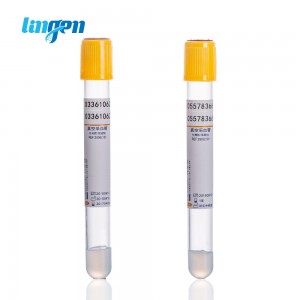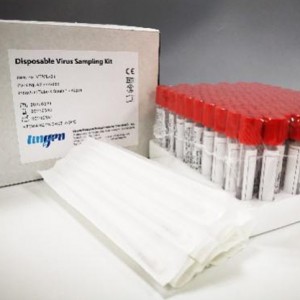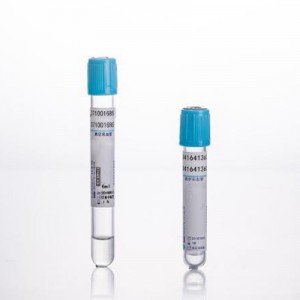Gel Yellow Blood Collection Tube
Short Description:
For biochemical detection, immunological experiments, etc., not recommended for trace element determination.
Pure high temperature technology ensures serum quality, low temperature storage, and frozen storage of specimens is possible.
Separation gel blood collection tubes have been widely used in clinical laboratories. Separating gel can form an isolation layer between cell components and serum (plasma), effectively prevent material exchange between blood cells and serum (plasma), and ensure the stability of serum (plasma) components within a certain period of time. Separating glue is mainly composed of silicone rubber, macromolecular hydrocarbons, hydrophobic glue, etc. As a polymer material, it is insoluble in water and inert. It is a thixotropic viscous liquid with a density of 1.04-1.05 mmol/ Between L, it has the advantages of oxidation resistance, high temperature resistance, low temperature resistance, and good air tightness. The density of serum is 1.026-1.031 mmol/L, and the hematocrit is 1.090-1.095. Due to the specific gravity, the separating gel is just between serum and blood cells, so under normal circumstances, blood will appear in sequence after centrifugation. Serum, separating gel, and blood cells 3 floors.
There are generally two types of separation gel blood collection tubes commonly used in laboratories: serum separation gel procoagulation tube and plasma separation gel anticoagulation tube. The serum separation gel procoagulation tube is to add coagulant to the blood collection tube to shorten the blood coagulation time, obtain serum quickly, and report the results in the shortest time. Glass blood collection tubes do not need to add coagulants, and blood contacting the glass tube wall will trigger coagulation. However, when coagulation factors XI and XII come into contact with plastic blood collection tubes, their ability to be activated is very weak, and a coagulant needs to be added to shorten the coagulation time. The plasma separation gel anticoagulation tube is sprayed with anticoagulants such as lithium heparin on the inner wall of the separation gel blood collection tube to meet the needs of rapid plasma biochemical emergency testing.
In practical applications, it is often encountered that the separation effect of the separation gel blood collection tube is not good, for example: in some separation rubber tubes, it can be seen that the separation gel fragments or oil droplets are floating on the surface of the serum or suspended in the serum; the separation gel layer floats on the serum layer. above etc. Separating gels can also interfere with some test results. In our department, it has been found that the specific batch of reagents and the serum separation gel accelerating tube reacted with each other during the HBSAg detection of the Abbott i2000SR detection system, resulting in false positive results.
This paper mainly analyzes from two aspects, that is, the reasons for the poor separation effect of the separating gel, and the influence of the introduction of the separating gel on the measurement.
1. The mechanism of separating serum and plasma by separating gel Separating gel is a thixotropic mucocolloid composed of hydrophobic organic compounds and silica powder. The structure contains a large number of hydrogen bonds. The existence of hydrogen bonds constitutes the chemical basis of the thixotropy of the separating gel. . The specific gravity of the separating gel is maintained at 1.05, the specific gravity of the blood liquid component is about 1.02, and the specific gravity of the blood formed component is about 1.08. When the separating gel and the coagulated blood (or anticoagulated whole blood) are centrifuged in the same test tube, Due to the centrifugal force applied to the separating gel, the hydrogen bond network structure is broken into a chain-like structure, and the separating gel becomes a low-viscosity fluid. Due to the different specific gravity, the separation gel is reversed and stratified to form three layers of blood clot (anticoagulated whole blood)/separating gel/serum (plasma). When the centrifuge stops rotating and loses centrifugal force, the chain particles in the separating gel form a network structure again by hydrogen bonds, restore the initial high-viscosity gel state, and form an isolation layer between serum (plasma) and blood clot (anticoagulated whole blood). .
2. Reasons for the poor separation effect of separating gel
2.1 Separating Gel Quality The specific gravity of the separating gel is between that of serum (plasma) and blood cells, which is the physical basis for the reversibility of the separating gel and the separation of serum (plasma). If the quality of the separation gel of the blood collection tube is poor and the specific gravity does not meet the requirements, it will inevitably affect the effect of separating serum (plasma), and the phenomenon that the separation gel and serum (plasma) are intertwined is likely to occur.
2.2 Incomplete blood coagulation After centrifugation, sometimes the separation gel compartment and serum and blood clots are not completely separated, and fibrin filaments appear in the serum. The reason is often that the blood is not fully clotted before centrifugation. Incomplete blood coagulation can cause fibrin to be mixed in the isolation layer. The serum separation rubber tube must be used correctly according to the instructions, and the serum can be prepared by centrifugation after the blood is completely coagulated (generally, the plastic tube containing the coagulant needs to be placed upright for about 30 minutes, and the blood collection tube without the coagulant needs to be placed upright for 60-90 minutes). high-quality serum samples.
2.3 Centrifugation temperature The centrifugation temperature has a significant effect on the effect of separating serum from the separation gel tube. The serum was clear in the inert separating gel accelerated coagulation tube separated by an ordinary centrifuge at room temperature, but oily beads of different sizes appeared in 15% to 20% of the samples. On the other hand, no oily beads were found in the serum separated from the test tube centrifuged by a low temperature centrifuge. When the temperature exceeds the storage temperature required for the separation gel, the inert gel will dissolve in the serum. It will not only block and contaminate the sample needle and reaction cup of the biochemical analyzer, but also have a relatively large impact on some biochemical measurement results.








